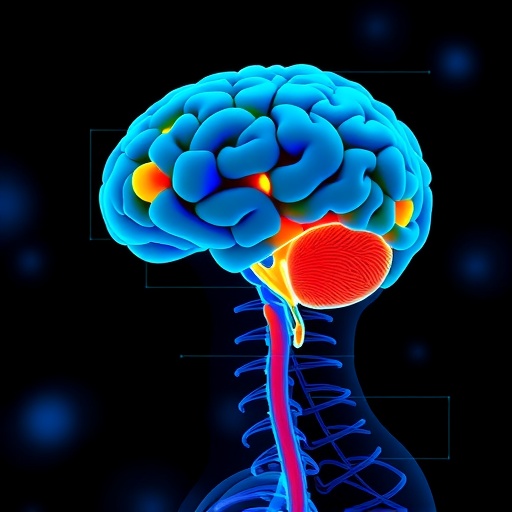In a groundbreaking preclinical study, researchers have uncovered pivotal insights into how tamoxifen, a cornerstone therapy for breast cancer, may paradoxically promote the growth of uterine cells, potentially increasing the risk of secondary uterine cancers in patients undergoing treatment. This discovery not only deepens our understanding of tamoxifen’s complex biological effects but also opens promising avenues for interventions that could mitigate these unintended risks, reshaping future breast cancer therapy paradigms.
Tamoxifen has long been celebrated for its efficacy in combating estrogen receptor–positive breast cancer, markedly improving patient survival rates. However, epidemiological data have consistently indicated that patients on tamoxifen face a 2- to 7-fold greater likelihood of developing uterine cancer within a window of two to five years following treatment initiation. Though the absolute incidence remains relatively low, this risk represents a significant clinical conundrum and underscores the necessity for elucidating the molecular underpinnings that drive tamoxifen-induced uterine carcinogenesis.
The collaborative effort, led by scientists from leading institutions including Mass General Brigham, the Broad Institute of MIT and Harvard, Dana-Farber Cancer Institute, and the Berlin Institute of Health at Charité, harnessed cutting-edge genomic and molecular biology techniques to dissect the mechanisms by which tamoxifen influences uterine cellular behavior. Their findings, recently published in the prestigious journal Nature Genetics, illuminate a surprising biological paradox: rather than driving uterine cancer through conventional mutational routes, tamoxifen appears to activate specific cell growth signaling pathways, particularly the PI3K-AKT axis, without necessarily inducing classical oncogenic mutations.
.adsslot_MbEqmSRwd6{ width:728px !important; height:90px !important; }
@media (max-width:1199px) { .adsslot_MbEqmSRwd6{ width:468px !important; height:60px !important; } }
@media (max-width:767px) { .adsslot_MbEqmSRwd6{ width:320px !important; height:50px !important; } }
ADVERTISEMENT
Utilizing whole-exome sequencing on 21 uterine tumors from patients previously treated with tamoxifen, the team compared mutational landscapes with those documented in tamoxifen-naïve uterine cancers. A striking observation emerged: only 14% of tamoxifen-associated uterine cancers bore mutations in the PIK3CA gene, a critical regulator in the PI3K pathway, whereas nearly half (48%) of non-tamoxifen-associated uterine cancers harbored these mutations. This discrepancy suggests that tamoxifen-associated tumors may arise through a distinct, non-mutational mechanism driven by pathway activation rather than direct genetic alteration.
Furthering this line of investigation, the study explored whether pharmacological inhibition of PI3K could counteract tamoxifen-induced pathway activation and potentially suppress uterine cell overgrowth. Treatment of tamoxifen-exposed mice with alpelisib, a selective PI3K inhibitor already approved for certain breast cancer subtypes, resulted in a pronounced decrease in PI3K-AKT pathway signaling, diminished IGF1 receptor activation, and notably reduced cell proliferation within uterine tissues. These results illuminate a promising therapeutic strategy to offset the unintended pro-proliferative effects of tamoxifen on the uterus.
The findings carry profound clinical implications. They suggest that co-administration of PI3K inhibitors in patients receiving tamoxifen might provide a strategic safeguard against the emergence of secondary uterine cancers, thereby enhancing the safety profile of this vital breast cancer treatment. As Dr. Gad Getz, a senior investigator and bioinformatics expert involved in the study, articulated, the research identifies a clear and actionable molecular pathway through which tamoxifen exerts its unexpected uterine effects, paving the way for targeted interventions.
Looking ahead, the research team emphasizes the necessity of clinical trials to evaluate the safety and efficacy of combining tamoxifen with PI3K pathway inhibitors such as alpelisib in the human patient population. As noted by Dr. Kirsten Kübler, formerly of Mass General Brigham and now a key scientist at the Broad Institute and Berlin Institute of Health, such trials could revolutionize breast cancer management by preserving tamoxifen’s benefits while eliminating its critical oncogenic side effects.
Moreover, this discovery highlights the broader principle that drug repurposing—employing existing targeted therapies like PI3K inhibitors in novel combinatory regimens—can expedite advancements in cancer care. It also exemplifies the necessity for vigilant surveillance of secondary cancer risks in long-term cancer survivors, ensuring that treatments designed to save lives do not inadvertently sow the seeds of future malignancies.
This extensive inquiry, supported by funding from prominent institutions including the National Cancer Institute, Dana-Farber Cancer Institute, and several cancer research foundations, underscores a commitment to translational cancer research that bridges laboratory findings directly to patient benefit. The public disclosure of potential conflicts of interest by the study authors further ensures transparency and scientific integrity in this critical field of investigation.
In closing, the research spearheaded by this consortium signals a transformative step in understanding and mitigating tamoxifen’s off-target effects. While tamoxifen remains an indispensable therapeutic agent in breast cancer treatment, awareness and management of its uterine risks through PI3K pathway modulation could profoundly improve patient quality of life and survival outcomes in years to come. This paradigm-shifting work sets the stage for clinical innovations that harness molecular precision to optimize cancer therapeutics safely.
Subject of Research: Animals
Article Title: Tamoxifen Induces PI3K Activation in Uterine Cancer
News Publication Date: 22-Aug-2025
Web References:
https://www.nature.com/articles/s41588-025-02308-w
http://dx.doi.org/10.1038/s41588-025-02308-w
References:
Kübler K, Nardone A et al. “Tamoxifen Induces PI3K Activation in Uterine Cancer” Nature Genetics DOI: 10.1038/s41588-025-02308-w
Keywords: Uterine cancer, Breast cancer, Tamoxifen, PI3K pathway, Alpelisib, PI3K-AKT signaling, Insulin-like growth factor 1, Secondary cancers, Cancer genomics, Targeted therapy
Tags: breast cancer therapy complicationscancer treatment risk factorscollaborative cancer research effortsestrogen receptor-positive breast cancergenomic analysis in cancer researchinterventions for tamoxifen side effectspatient survival rates and cancer riskspreclinical study on breast cancersecondary cancers and tamoxifentamoxifen biological effectstamoxifen treatment and uterine cancer riskuterine carcinogenesis mechanisms





